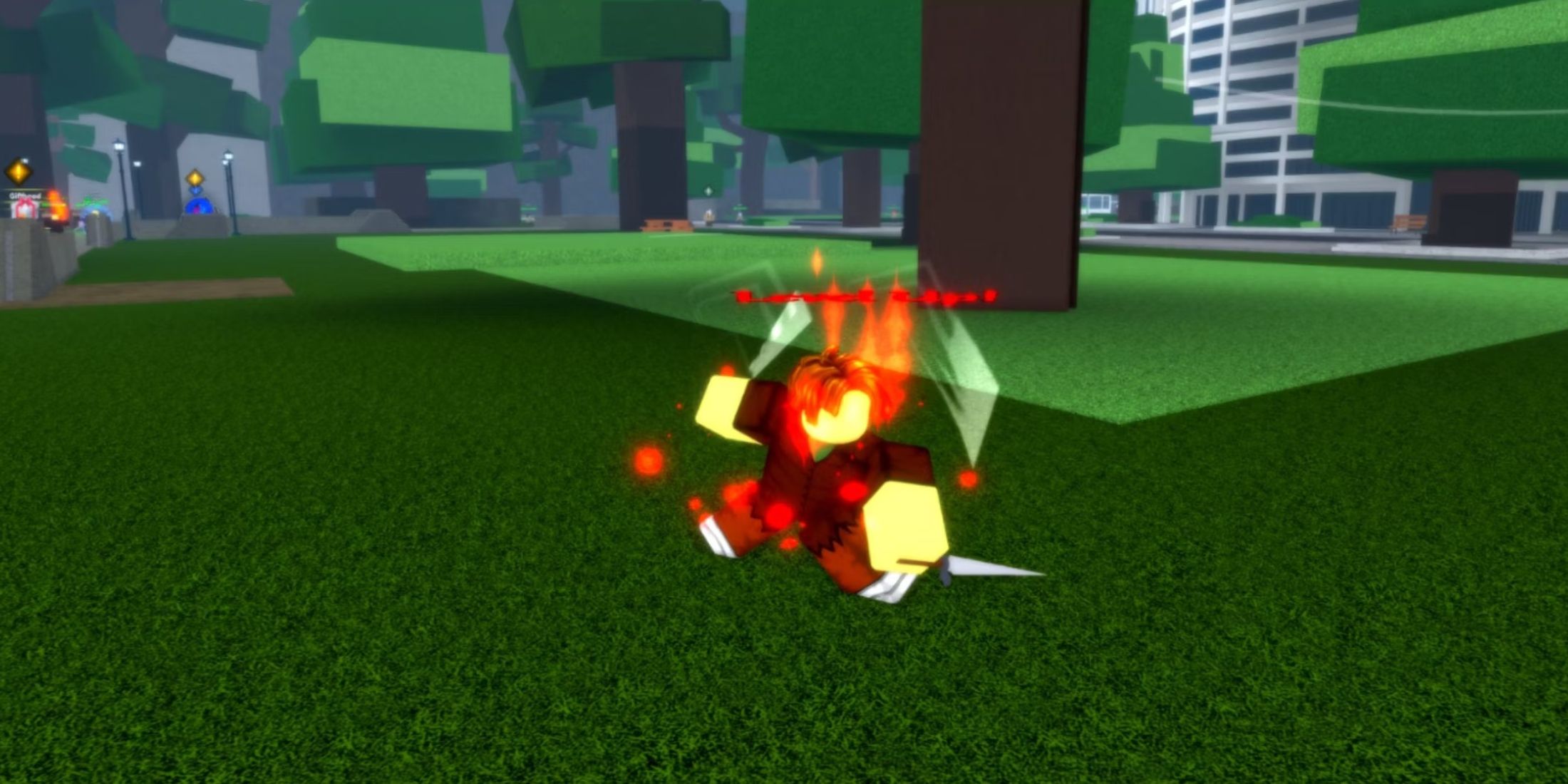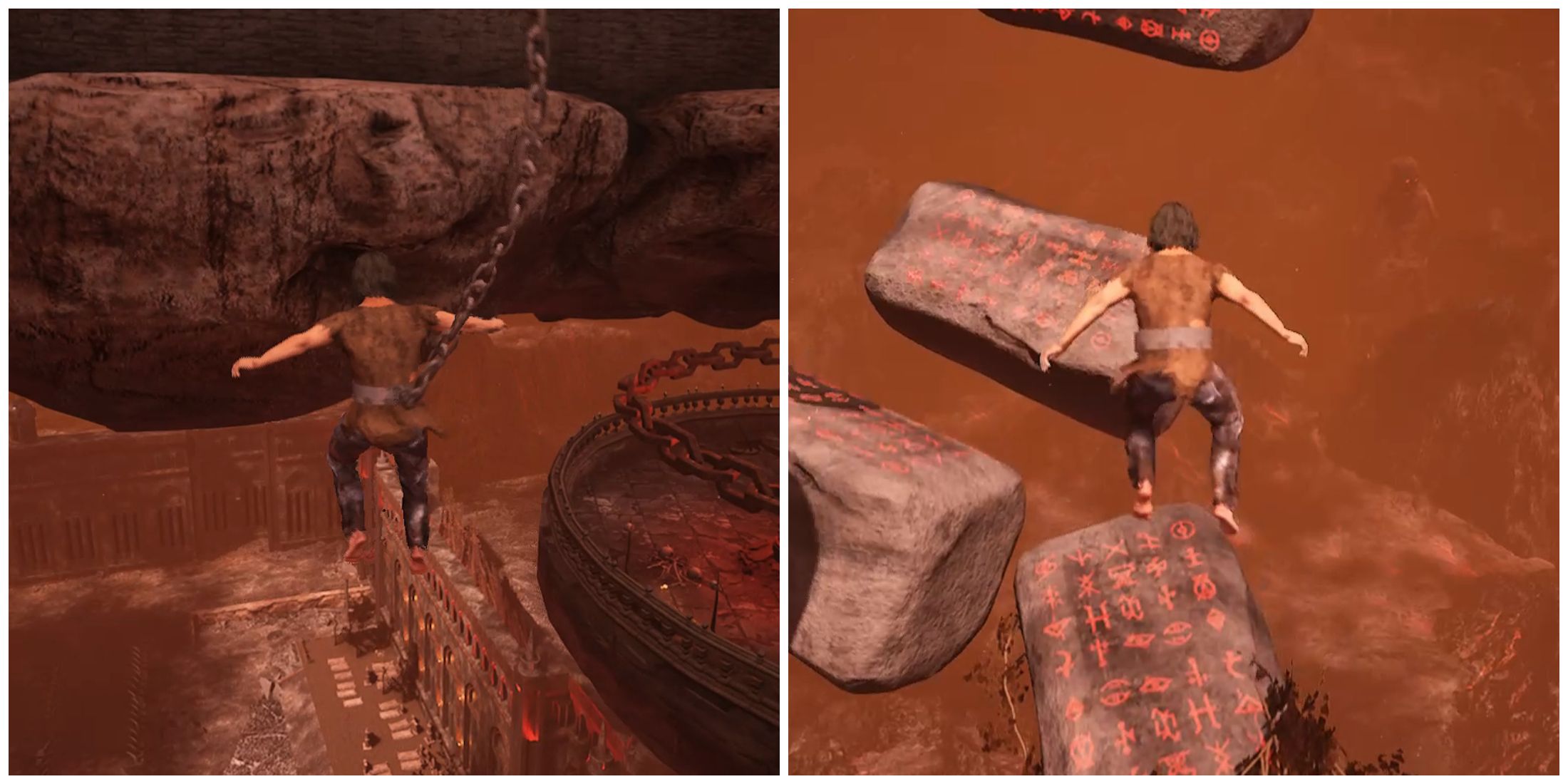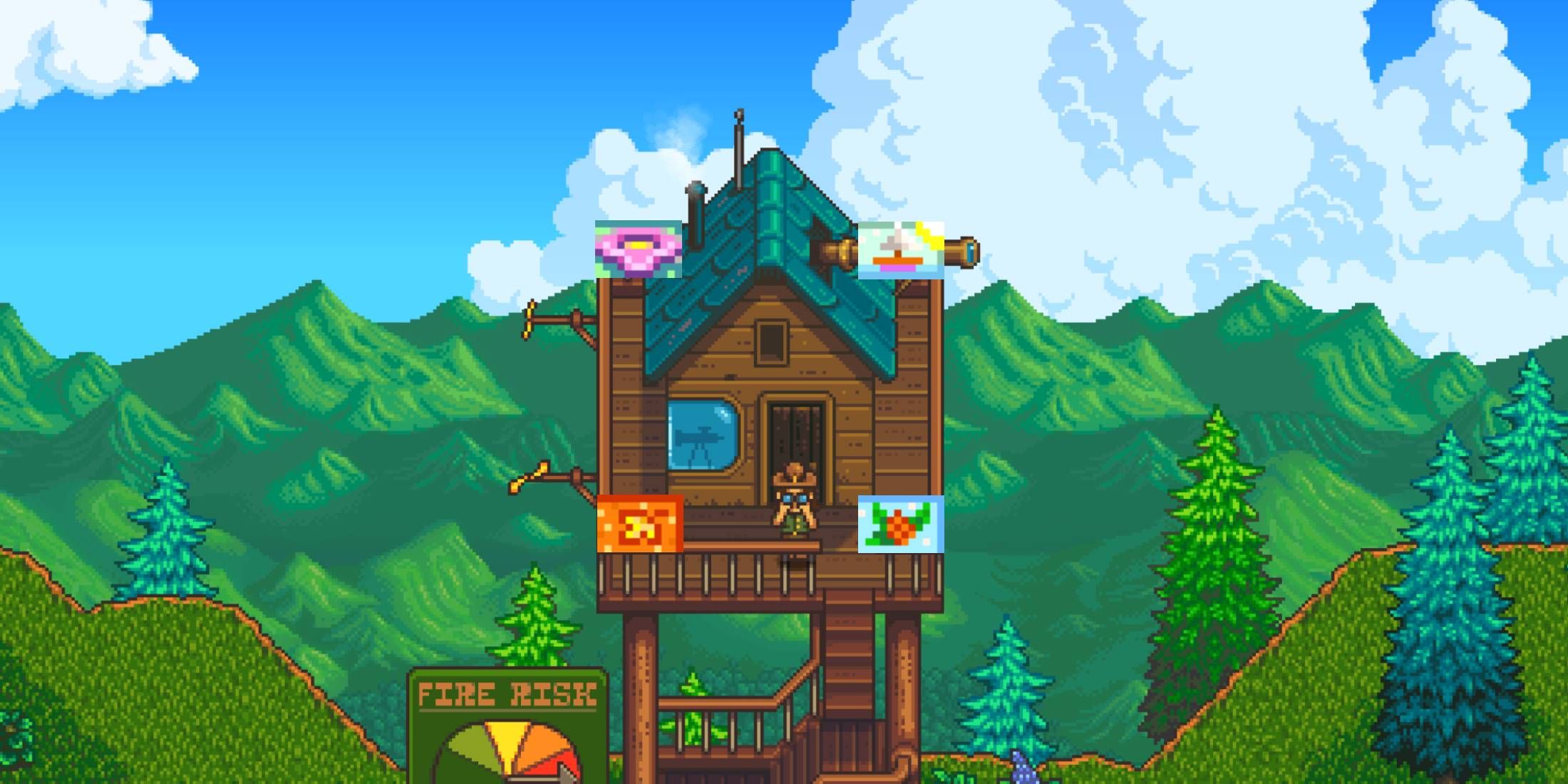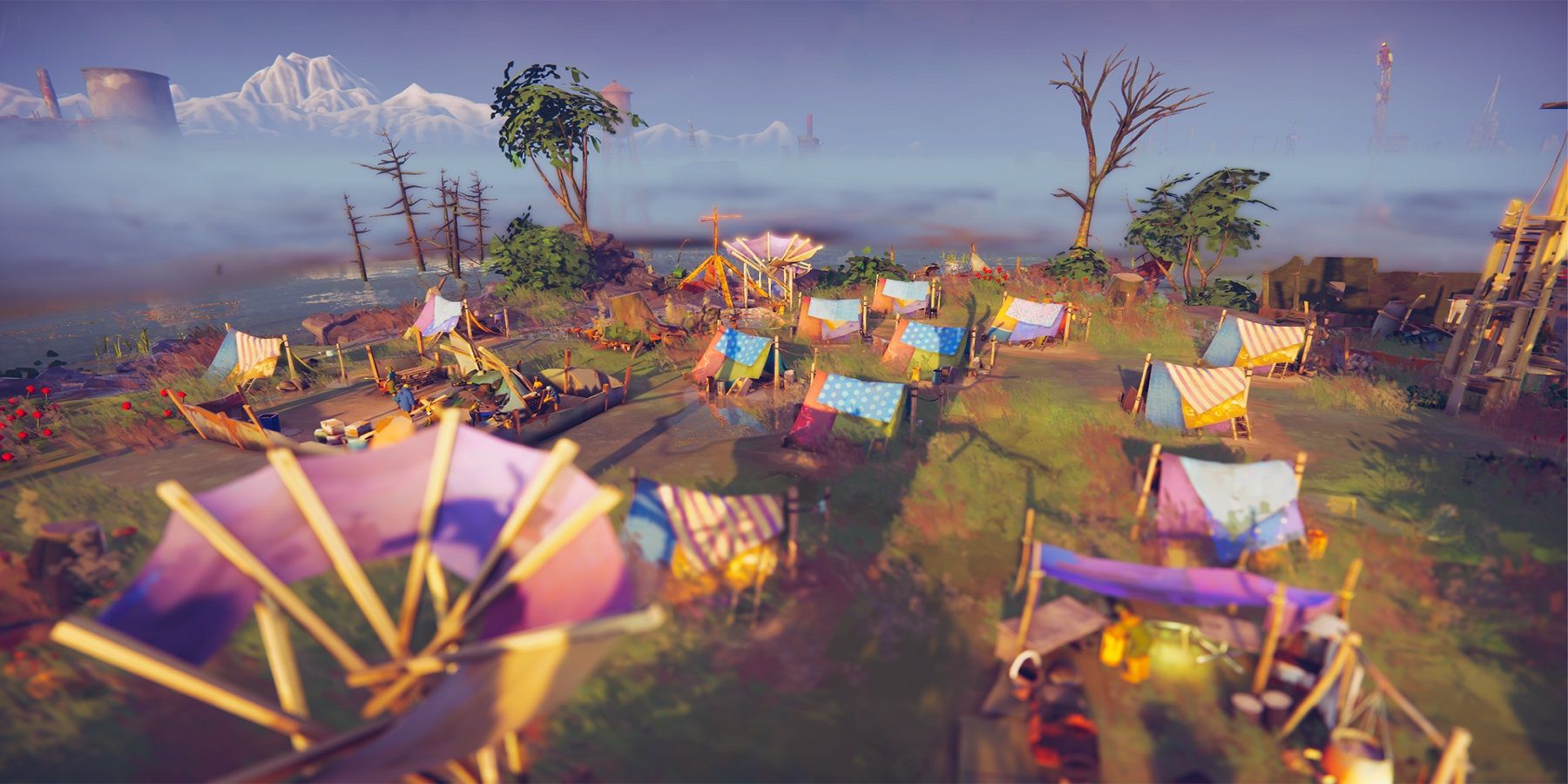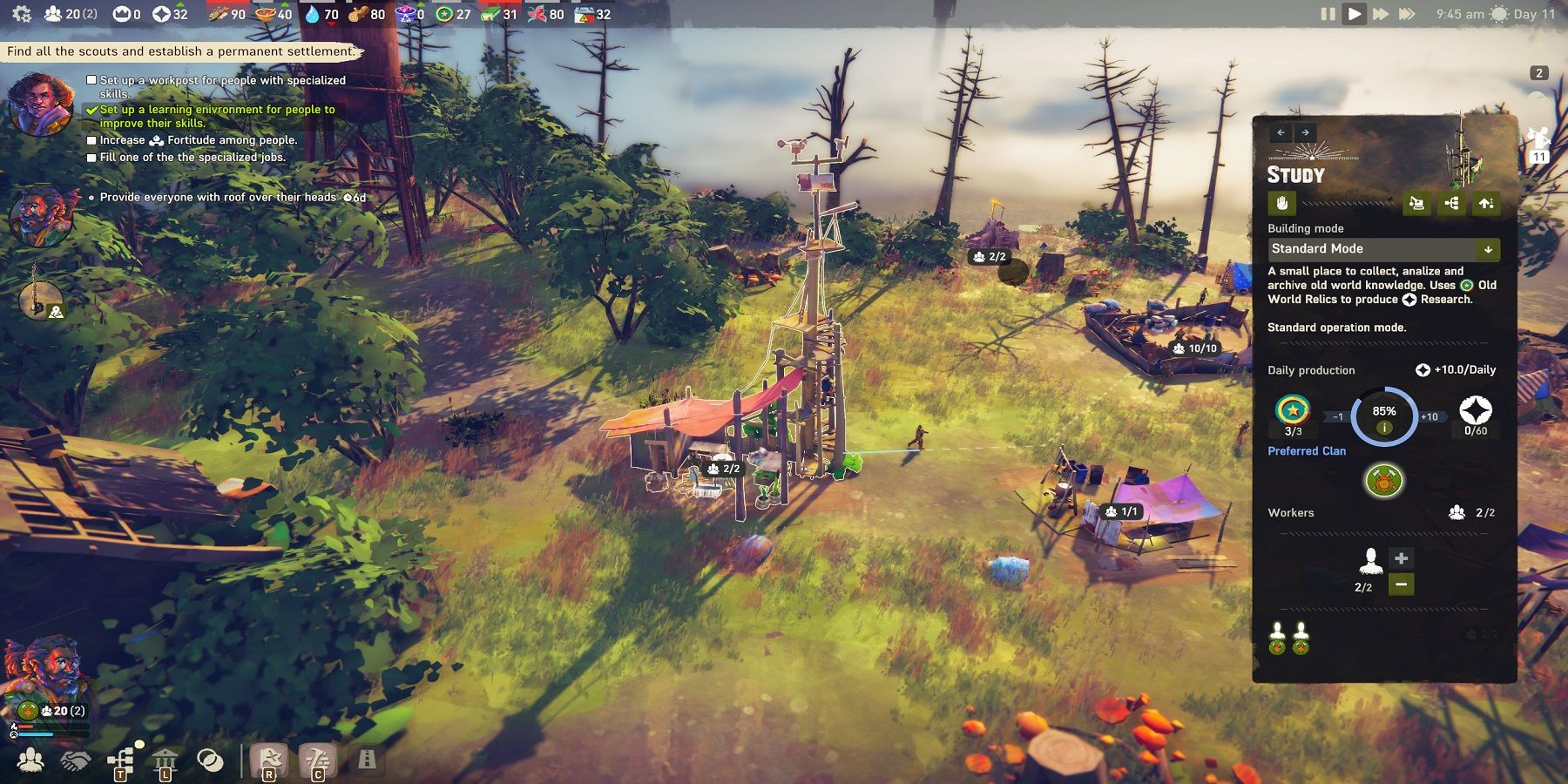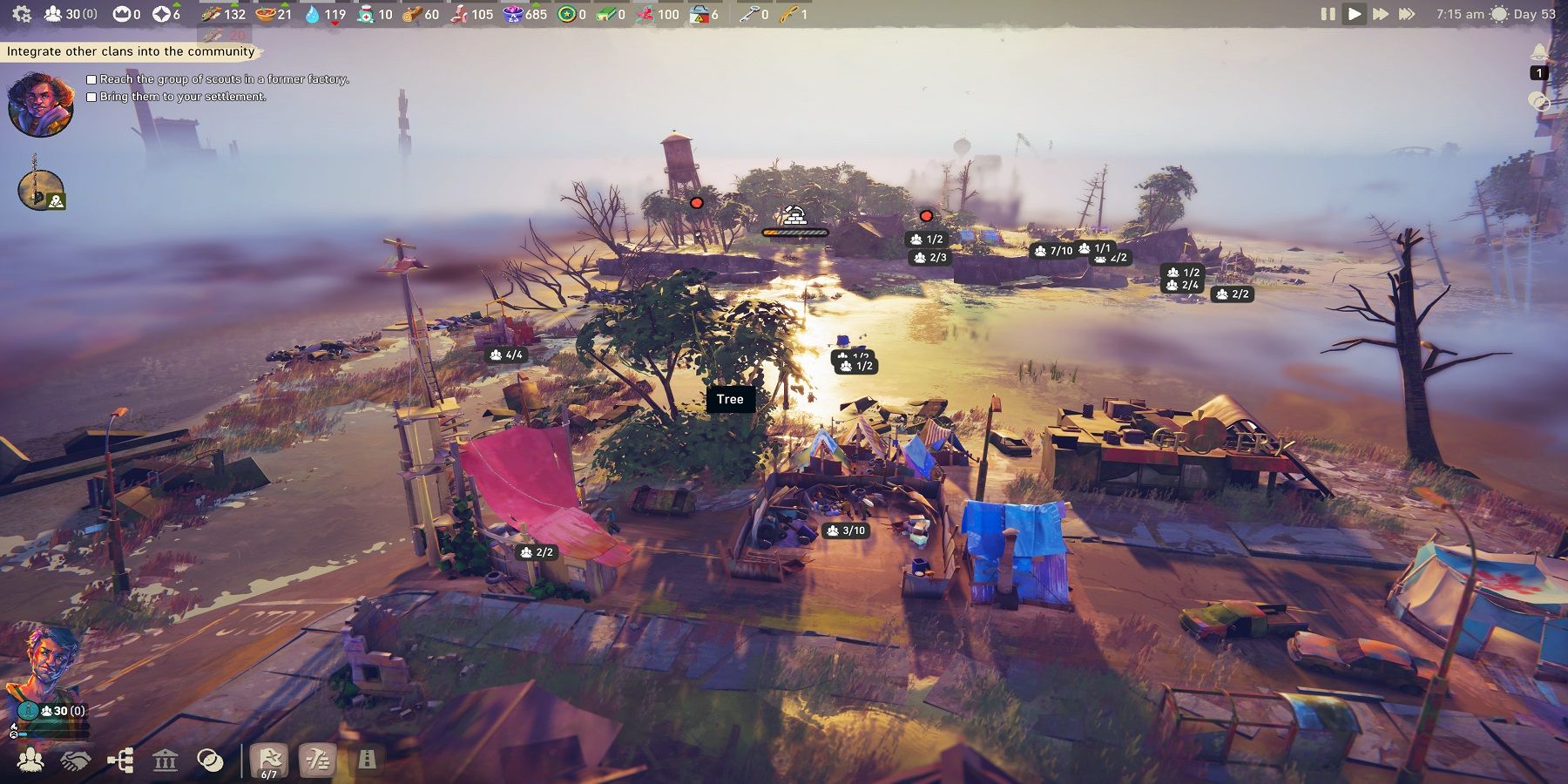Floodland is a city builder with survival elements taking place in a world overcome by the rising sea levels on account of a catastrophe related to climate change. The next game to be released by Vile Monarch in collaboration with Ravenscourt, Floodland players will need to navigate waterlogged world and the complexities of human relations in order to save humanity, or at least what's left of it.
Floodland is coming to Steam next month, and writer Alexandre Stroganov spoke with GameZXC about its gameplay and development. Interview has been edited for clarity and brevity.
Q: What was your involvement with Floodland?
A: I’m a writer and at the same time I would say that I am responsible for the final polish of the English in the game. I am responsible for making things coherent, logical, clear, digging into the details of the language itself, and writing as well.
Q: In terms of writing, were you involved in writing the story of the game?
A: I was responsible for, maybe I would say “filler” in this case.
Q: We’ll talk about the game in two parts – how the game is played and how you developed it. There are great videos on the Steam page, including an interview with Kacper Kwiatkowski and Kuba Palyska. Tell us, what is Floodland?
A: Wow. This brings me back to Gamescom. So it’s a survival city builder set in a post catastrophic world where basically we have missed our opportunity to fix climate change issues and it has backfired hard. And there was an extra event which was a mysterious event that exacerbated the whole situation. So a lot of the world is flooded, and specifically the region that the player is going to be located in. The world is mostly devastated. There are no electronics, and we have been set back by … 1,000 years or more. And we are trying to rebuild some semblance of society.
People kind of… It’s like a hint that we have been nomadic until the point where the player comes in and we are trying to rebuild a city, like a civilization. So we are putting all these peoples who have been roaming, living with their own ideologies, cultures together. Try to create a kind of settlement where these peoples who have been like apart now have to clash with each other and have to live together.
Q: Is that part of a narrative story in the game? Is there an objective?
A: The narrative aspect: The game has a specific story. It’s like this is the thing that is supposed to drive you. To discover what has happened before and maybe to see how far you can go with the means that you have at hand, and the possible relics of the old world. But a lot of the things are more like ideas of who we were and who we are right now. And a lot of this is specific to the player. There is no specific objective like, “BECOME A FANTASTICALLY WORKING SUPER MEGA CITY!” You can try. There will be obstacles in your way, but in the end it’s how well you fare.
Q: What kinds of decisions can affect the player’s track through the game?
A: Here’s the thing. The story itself will kind of lead you in a specific direction. It comes to, I would say it, technologically in this case. Like you can make some choices, but they are more like smaller modifications. The most important aspect is the society builder. Because in the end this is the meat of the game itself. How you impose your will on the people. Is it imposing your will on the people? Are you going to be a listener? How you balance. Are you going to create a balanced society where ever the people who you do not agree with have a place to voice their opinions and they are heard? Or are you going to marginalize them?
Maybe the game is going to throw you a curveball and democracy, even though you might believe in it, is not the best solution. Or maybe it is. It’s going to be a combination of your own personal beliefs of what you think is right for the people and what the people actually believe is right in these circumstances.
Q: Is there a time function in the game?
A: It’s like a city builder. Time flows and you flow with it. The complex nature of it is that this is a survival city builder. People can die and we have seen that happen. This game is going to keep you on your toes. It’s not that you just build buildings. The worst thing is that in some places you might think of currency, which is like not here. Here it’s about whether people have enough food? Water? Are their needs met? And later on, are their higher needs met? Shelter is still basic, but do they have places to spend their free time and the opportunity to do it or are they under an iron fist of the present dictator?
Q: One of the ways to advance in the game is by developing technology. Can you explain that in more detail?
A: The thing is that like we were thinking about how the world is going to look in our scenario and what kind of resources are we going to have available and how is it going to function. So the technology is going to progress. First, you are going to collect stuff that is detachable and easy to construct without many machines. But as you progress, it’s going to become more and more complex. You start with plastic debris that you put your shanty town together into. And later on you’ll be able to build proper houses. You will also be able to impact your environment. So any kind of derelict places, you will be able to renovate them. If there are going to be broken streetlamps or maybe car wrecks, as you progress you will be able to remove them or reclaim them. This is also another big element: reshaping this broken world into something that’s not chaotic, it’s going to be ordered and working with you.
Q: How many hours would you say are dedicated to completing the main story?
A: I would go for 20. It’s difficult to say since we’ve been playing the game so much.
Q: Are there rewards in game? Achievements on Steam?
A: There is a Steam reward list with objectives and achievements. But there is a caveat to the speed, because the game can be sped up. It’s played in real time, but at the same time, if you decide that you have given your directives and the people are working efficiently and everything is functioning, you can speed the game up. Depending on your game style and how you function, that can take longer, more or less time. But coming back to the narrative question, there is a specific story that is going to lead the player to a specific place. That’s the thing that you have to complete, but the emphasis is “Can you make the people survive together?” This is a game that will require some learning.
There is a learning curve, and I would say that there is a higher than zero probability that you will stop the game at some point because it’s a disaster and you will have to do it again because you will want to do it better. So this is also an important aspect. Learning is going to be a factor. Once you complete the main objectives of the narrative part, in the end it’s how well you can manage these various peoples, and it might prove to be far more interesting than the story itself. Because that’s the important part – how people live together, but not through the story, but how you experience it as a player.
Q: The game is being released November 15, when did you start working on this?
A: Five years, that’s about when the first concepts appeared.
Q: And the coronavirus happened in the last five years…
A: Yeah, so that threw us a curveball, too.
Q: What made you decide to go with this theme? Why climate change as the setting for your catastrophe?
A: So the idea is that this is something that has been bubbling up in the guys who have basically created the company for a while. Because the history of the company is that a lot of the games have been more lighthearted and more fun. This was an idea to do something actually serious. Kacper worked on This War of Mine so the idea of working with a serious subject that has this sort of message which needs to be discussed. I would say that climate change is important. It is a thing that requires discussing. We need to acknowledge it and talk about it, even if our opinions differ.
Q: It’s absolutely a hot topic. You mentioned that the players need to learn about how to play the game. What would you say they might learn factually about climate change?
A: As much as we know that this is a contested issue. This is a fictional setting. It’s important to say – this [game] is not a statement. It’s an experience and it’s about rebuilding. The climate catastrophe is a setting because I think that people have made loud, bold statements and claims and these sometimes sink in. Sometimes they bounce off, and that’s not the purpose. The purpose is to have a story of hope. And when it comes to facts in a fictional game? I would leave it at that. In the end, it’s a work of fiction. It’s a video game which we think can important, but if it is important depends on the player. It depends on how you perceive it.
Q: Is there voiceover narration in the game or just for the promos?
A: You start with a clan and the clan is represented by a leader- a chief. And there are going to be more clans, up to five. And they will talk to you, or they will not specifically talk to you, not at this time, but we don’t want the player to be flooded. So there is not going to be specific voiceover narration. It might be too much.
Q: Can you tell us more about the clans?
A: The plethora of clans is up to around 30 or more, but of course not all of them are going to appear in any one gameplay. In any one gameplay, you will have up to 5. The clans are kind of located ideologically on two axes: old/new, liberal/authoritarian. And they are going to be all over that. And that’s why they are going to be in love with each other or completely hating what they stand for. And it’s going to be up to you to see.
Q: From a promo video, we found the name “Rebirth Power Plant.” Is that a significant goal or objective for players to get to?
A: Yes. That’s the thing. Think about it like this. It’s a post-catastrophic world where none of the electronics work, and then you can find a power plant. Now that’s something. That’s a big something.
Q: Upgrading technology, keeping society together, and surviving. Is there anything else you would want players to take away from their experience playing Floodland?
A: Sometimes what you deeply believe in deep inside might not be the best thing at the moment, because that’s something that I found myself playing the game. I have my own set of beliefs. But, in the end, if I want to be the good leader, I am there for the people. And if they are authoritarian, then I will be there as their authoritarian leader if that’s what they need me to be. That’s kind of controversial even for me when I think about it because it goes against most of the things that I believe in. But at the time that’s what the people want and for me that’s the interesting part.
Q: Is there anything else you would like to tell us about the game?
A: Since I’m knee-deep in the game’s mechanics, I want to say don’t get discouraged. This game is about the complexity of human relations. And I believe they are captured in a pretty good way. It might at the time seem daunting, the task of getting it all to work. It can work. All you have to do is get in with it. I know it sounds like a game for hardcore gamers, but not necessarily. A lot of the things within the game are natural. So don’t get discouraged. Keep playing the game. Keep killing your people sometimes and then restarting the game and not letting them die until you think this is what you want.
[END]
Floodland comes out November 15, 2022, exclusively on Steam.

